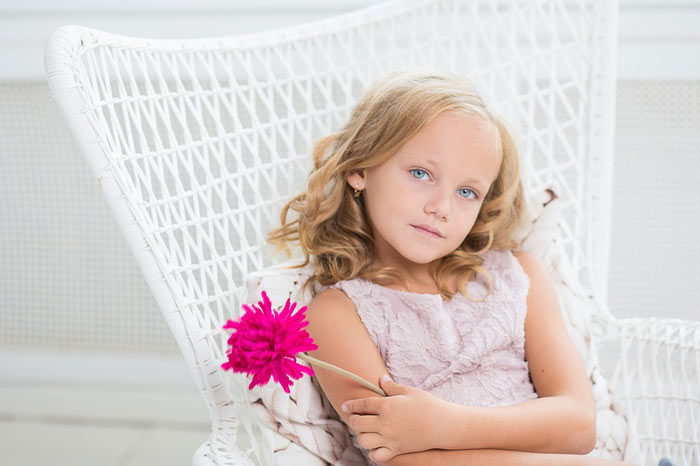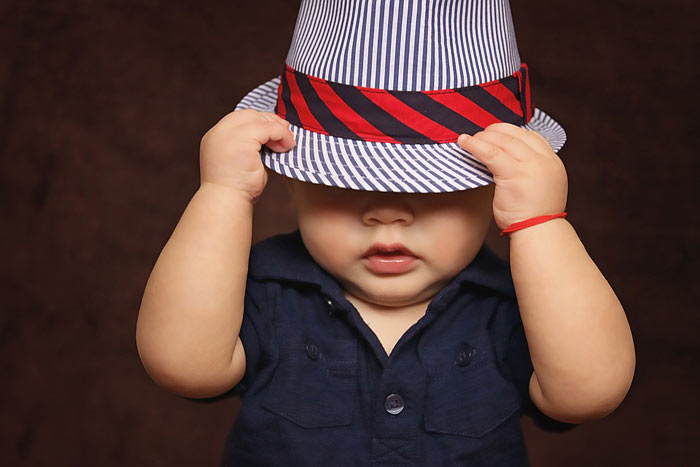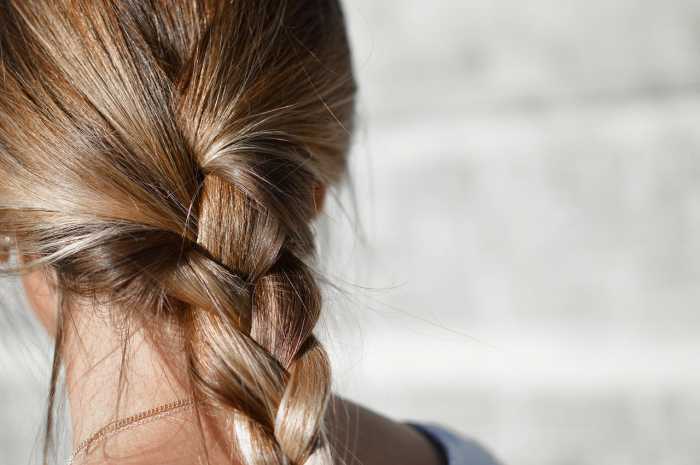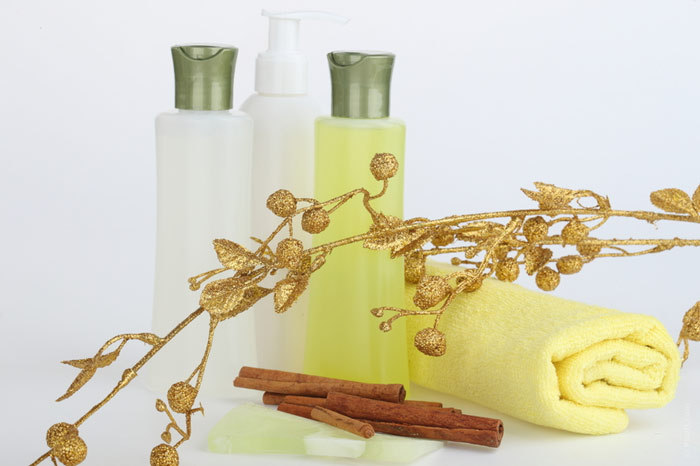We’re very careful about what we put in our children’s food and what we apply on their skin, but how much do we know about taking care of their hair? We tackle the most common questions and concerns about children’s hair — from picking the right hair products and preventing lice, to how to save money on haircuts (all you need are the right hair cutting scissors!).

Taking care of your baby’s hair
At this stage, your primary concern is to choose the gentlest products and turn bath time into a pleasant and soothing experience.
Choose a gentle baby shampoo
Baby shampoos shouldn’t contain ingredients that can irritate their scalp and skin, or dry out their hair. Look for hypoallergenic shampoos with a neutral PH. There are also organic and all-natural baby shampoos, which don’t contain sulfates or other chemicals. Many parents prefer tear-free formulas or fragrances like lavender or chamomile that can help pave the way for a long nap.
Don’t wash their hair every day
Even gentle shampoos will strip moisture from hair and scalp. Just wash your baby’s hair just 3 or 4 times a week. Between shampoos, wipe his head with a damp washcloth.
Make sure to rinse well
Shampoo residue can irritate your baby’s sensitive skin. To get rid of all the lather (without getting any into his eyes or ears) use a small cup to pour water. Gently massage the scalp, which both cleanses the scalp and calms your baby. Use this time to talk or sing to him, or even just smile and make eye contact. It’s the perfect way to turn baths into bonding moments.
Taking care of a Toddler/Preschooler’s Hair

Toddlers are very active, and their hair and scalp get very sweaty and stinky. Other common hair concerns raised in parenting forums are: lice, damage from pool water, tangled or messy hair, and haircuts. Which of these issues do you encounter?
Solve stinky scalp
Does your child’s head stink even after a bath? Celebrity dermatologist Francesca Fusco, MD, explains that “stinky scalp syndrome” isn’t caused by bad hygiene. Some people tend to produce more oil, which mixes with sweat and residue from shampoo and conditioners. This is practically a buffet table for yeast, which feed on it and emit that foul odor.
Dr. Fusco says that the best way to fight scalp odor is to look for shampoo ingredients that kill yeast and other bacteria, such as zinc pyrithione. If you prefer something more natural, look for tea tree oil, rosemary, peppermint, or lemon.
You can also make a DIY hair rinse! Just prepare the solution, pour it over your hair, and leave it on for 5 to 10 minutes. Wash with warm water. Here are some you can make with ingredients you already have in your kitchen:
- Apple cider vinegar hair treatment. This helps remove oily residue and makes hair shiny but not greasy! Mix 1 part of apple cider vinegar with 4 parts water. If your child doesn’t like the smell of vinegar, add a few drops of essential oil.
- Lemon juice hair treatment. Mix 2 teaspoons of lemon juice into one cup of water. Massage into the scalp after your shampoo. Leave for 5 to 10 minutes and rinse.
- Tomato juice hair treatment. This balances your scalp PH levels and help get rid of bad odor. Just use the pulp of 1 to 2 tomatoes (you can mash it with a fork, or use a blender) and massage into your scalp. Leave for 10 to 15 minutes. Rinse off with water.
Save money with haircuts at home
Some kids hate getting their hair cut at a salon: they get restless waiting for their turn, or throw a tantrum when they’re in the barber’s chair. The fancy kids salons are also very expensive — you have to pay top dollar just so your child can watch cartoons or sit in a chair that looks like a car, then tip a hairstylist extra just because he’s “more patient”.
“I saved myself a lot of time, money and stress by trimming my children’s hair at home,” says Marianne. She just bought quality hair scissors and hair clips to section off the hair, then followed Youtube haircutting tutorials.
Treat and prevent lice
Lice is a common hair problem among kids who go to daycare of preschool, since they easily spread from one child to another. Use a lice shampoo, and then a fine-toothed comb. You can also try the “wet comb” treatment where you coat your child’s hair with conditioner or hair oil, dry the hair, then comb out the lice. Repeat this after 7 to 10 days, to remove any lice that were in unhatched eggs.
If your child had lice, then you need to change bedsheets and pillowcases in warm water or dried in a high heat setting for at least 20 minutes. You also need to clean hairbrushes and combs, disinfect hair cutting scissors or hair tools, and change towels.
If lice outbreaks are common in the school, you may need to use a lice shampoo once a week just for prevention. (Note: don’t use medicated shampoos on kids below 2 years old without consulting your pediatrician.)
Remove tangles – without pain or fuss!
Lots of kids hate getting their hair combed, which can be a problem if your child has hair that’s prone to tangling.
Use a wide-tooth comb or a detangling hairbrush with soft-tipped bristles. One mom who works as a hairdresser shares this great hair hack on a parenting forum: comb your child’s hair in the shower, after applying conditioner. “My child has very long and curly hair that gets all knotted up when it’s dry. I use a large comb to remove tangles while it’s conditioned. It also helps distribute the conditioner from roots to tips, and massages the scalp too,” she said.
Check out ponytail and braid tutorials

How do you keep your child’s hair neat while she spends the whole day playing? “Every morning I would fix my daughter’s hair in a ponytail, but she’d still come home with her hair in a total mess. So, I looked up some kids’ hair tutorials. I found some really easy braids and half-pony styles that were really cute and stayed in place even through soccer games and playdates,” says one Mom.
However, hairstylists recommend using elastics and clips that don’t tug on your child’s fragile hair. Also, don’t pull hair back too tightly: it’s uncomfortable, and can cause hairfall and split-ends.
Comb back baby-fine hair with a toothbrush
Does your child have short, baby hairs around her hairline? Just apply hairspray or gel on a toothbrush and brush them into place. “My daughter takes ballet lessons and her teacher is strict about their hair being in a neat bun with no loose hair. This hair hack really helped,” says Emily.
Protect hair at the pool
Chlorine can damage your child’s hair. To prevent your child’s hair from soaking up the chemicals, wet it first with regular water, then apply coconut or olive oil. The saturated hair can’t absorb pool water, and the coconut oil acts like natural shield and has nutrients that strengthen the hair shaft. You can also use leave-in conditioner or hair serum. You can also wear a pool cap (required by some public pools and resorts).
If your child swims frequently, use a clarifying shampoo twice a month to remove trace chemicals. You may also want to invest in a hair spray with UV protection, since both the scalp and the hair can be damaged from sun exposure.
Teaching older kids about haircare

As your child grows older, he needs to learn hygiene basics – including how to properly wash and care for hair.
As early as preschool, when you’re still supervising his baths, show him how to properly shampoo and condition hair – and most importantly, how to properly rinse hair out! Product build-up can lead to greasy scalp, dandruff, and stinky hair.
Place a grooming kit in their schoolbag, which includes a brush, a small mirror, and other hygiene essentials such as cologne and tissue. Teaching these basics at an early age won’t make kids vain; instead, it instills the habit of personal care and taking responsibility for themselves.
Let them take pride in their hair and their appearance, and allow them to make decisions too! They’ll enjoy picking out their own shampoo or trying out different hair accessories. There’s no harm in letting them try temporary highlights with hair mascaras (the color washes off at their next bath) or a different kind of haircut. This is all part of self-discovery and self-expression, and it’s just hair – it grows out!
This is also a good age to teach them how to love their natural hair texture and learn how to take care of it. “My tween daughter was very frustrated by her curly hair, because it wasn’t long and straight like the models she saw on TV. So, I showed her pics with celebs with curly hair, and we looked at Youtube videos on how to care for curly hair. For me, it was important that she became confident about herself and not get sucked into peer pressure and social standards – and hair was one very practical way of sending that message across,” one mom shares on a parenting forum.










